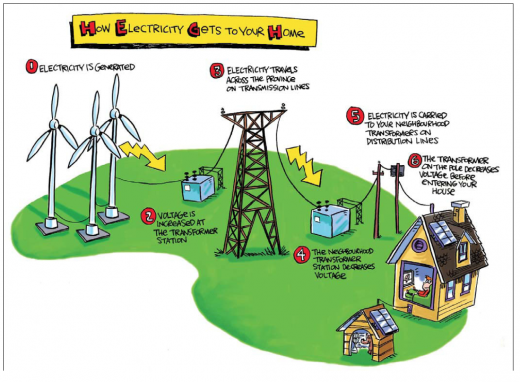Fridays Interesting Fact

How Electricity Gets To Your House
It’s always there whenever you flip a switch or plug in a cord, but electricity has to travel a long way to get to your house. In fact, the power plant where your electricity is made might be hundreds of Km’s away!
All the poles and wires you see along the highway and in front of your house are called the electrical transmission and distribution system. Today, power plants all across the country are connected to each other through the electrical system (sometimes called the “power grid”). If one power plant can’t produce enough electricity to run all the air conditioners when it’s hot, another power plant can send some where it’s needed. Electricity is made at a power plant by huge generators. Most power plants use coal, but some use natural gas, water or even wind. The current is sent through transformers to increase the voltage to push the power long distances. The electrical charge goes through high-voltage transmission lines that stretch across the country. It reaches a substation, where the voltage is lowered so it can be sent on smaller power lines. It travels through distribution lines to your neighborhood, where smaller pole-top transformers reduce the voltage again to take the power safe to use in our homes. It connects to your house through the service drop and passes through a meter that measures how much our family uses. The electricity goes to the service panel in your basement or garage, where breakers or fuses protect the wires inside your house from being overloaded.
Kids, never touch a service panel! It is only to be operated by your parents or a professional.
The electricity travels through wires inside the walls to the outlets and switches all over your house.


